Aerial Refuelling with the Aeronautica Militare Italiana
We bring you more from air forces around the world…
Gabriele Rivera spent time with 8th Gruppo, 14th Stormo of the Aeronautica Militare Italiana (Italian Air Force) and takes us on a journey with him on an aerial refuelling mission…which includes “buddy to buddy” refuelling with two tankers.
Article and Photos by Gabriele Rivera
April 20, 2016
 Rome, Italy, the Eternal City, attracts tourists from all over the world to visit her sacred and profane beauties; the city offers her guests the opportunity to enjoy a savory cuisine, eating almost constantly “alfresco”, or in open air, thanks to an enviable climate. For aviation enthusiasts Roma also offers some interesting options; we are going to reach one of these, about twenty kilometers from the city, following one of the busiest roads leading to the southern coasts of Lazio, we arrive at ‘Mario de Bernardi’ airport, better known as Pratica di Mare. The base, one of the largest in Europe for territorial extension, is home to several ‘reparti’ of the Italian Air Force, as well as other corps. Today we will be guests of the 8th Gruppo, 14th Stormo and will take part in an aerial refueling mission flying on one of the four Boeing KC-767A assigned to the group; besides refueling three Istrana’s A11B (otherwise known as AMX), the mission will provide us the chance to assist the buddy-buddy refueling operations between two tankers, giving opportunity to the pilots and the boom operators of both aircraft to refine the training in this specific AAR mode, which enables the KC-767A to extend the flight range over its fourteen hour limit, during which the airplane covers eleven thousand kilometers (5900 miles).
Rome, Italy, the Eternal City, attracts tourists from all over the world to visit her sacred and profane beauties; the city offers her guests the opportunity to enjoy a savory cuisine, eating almost constantly “alfresco”, or in open air, thanks to an enviable climate. For aviation enthusiasts Roma also offers some interesting options; we are going to reach one of these, about twenty kilometers from the city, following one of the busiest roads leading to the southern coasts of Lazio, we arrive at ‘Mario de Bernardi’ airport, better known as Pratica di Mare. The base, one of the largest in Europe for territorial extension, is home to several ‘reparti’ of the Italian Air Force, as well as other corps. Today we will be guests of the 8th Gruppo, 14th Stormo and will take part in an aerial refueling mission flying on one of the four Boeing KC-767A assigned to the group; besides refueling three Istrana’s A11B (otherwise known as AMX), the mission will provide us the chance to assist the buddy-buddy refueling operations between two tankers, giving opportunity to the pilots and the boom operators of both aircraft to refine the training in this specific AAR mode, which enables the KC-767A to extend the flight range over its fourteen hour limit, during which the airplane covers eleven thousand kilometers (5900 miles).
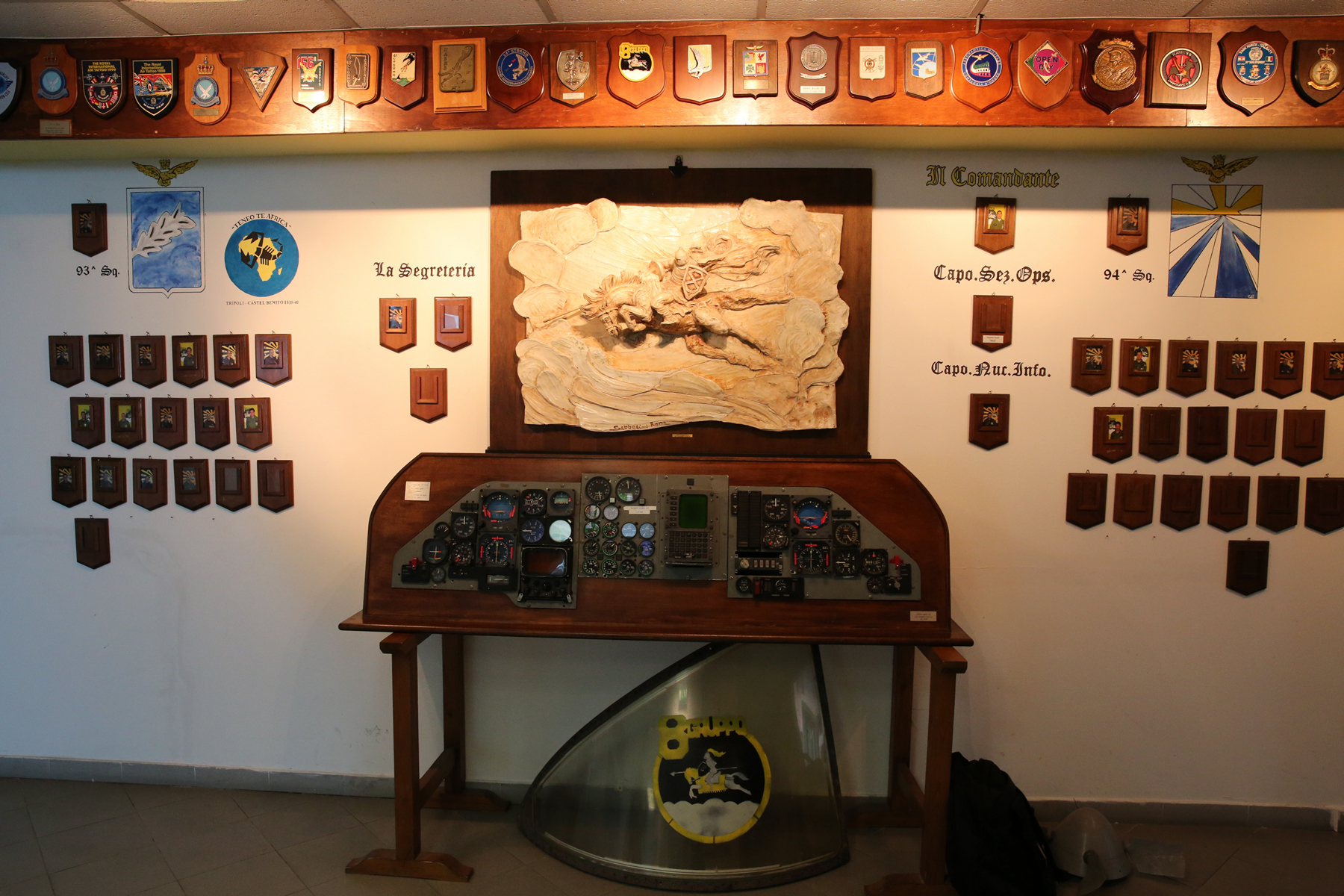
The mission, scheduled to last about four hours, starts early in the morning; the weather promises to be a typical spring day distinctly tasting of summer. After the briefing, we visit briefly the ATOC (Air Terminal Operations Center), which is a new hangar entirely devoted to the tanker’s operations, allocating also a dedicated cargo area, organized with special “cages” that allow to pre-plan the loads in order to make the most of the volumes offered by NATO standard 463L pallets. Next stop the apron, where our tanker, the 14-01, awaits us; it’s configured as a “Combi”, therefore a section of the upper fuselage compartment, between the cockpit and the seating for the passengers (up to 100), is reserved to the pallets (to a maximum of 10 including those stowed in the appropriate compartments of the lower fuselage). Therefore, for security reasons, in flight we won’t be able to transit from the cockpit to the pax area, and this will prevent us from taking pictures directly from the windows of the AMXs while refueling from the baskets reeled from the underwing pods; we will have to satisfy ourselves looking at the Aerial Refuelling Operators’ screens (ARO) situated on their remote station, located immediately behind the cockpit. Out of four, two tankers are usually set up in a full passengers fashion (200 pax), while the remaining one is configured as a cargo (carrying a maximum of 19 pallets). Should the need of reconfiguration arise, the high modularity allows the transition to the desired set-up in a few dozens of hours; e.g. the rows of seats (each consisting of 8 seats equipped with three points safety belts) are mounted on easily removable pallet. In any case, the payload amounts are up to 25 tons (55,000 lbs); with a maximum takeoff weight of 180 tons (396,000 lbs), each tanker normally carries 73 tons (161,000 lbs) of fuel, which can be increased to 92 (203,000 lbs) installing three auxiliary tanks in the forward lower cargo bay and other three in the aft one.

Once the pre-flight checks are completed, the pilots start the two turbofan General Electric CF6-80C2 (27,306 kg of thrust each, 59,000 lbs) and, after waiting for a Piaggio P.180 completing its landing, they move the tanker to the head of the runway, 2,500 meters (8,200 ft) long. After the take-off, the pilots start to steer towards Foligno, Umbria, center of the LI R48 area, where the plane will begin to orbit along a cookie-shaped track to perform refueling operations; on the four KC767s the FCS (Flight Control System) has been replaced with the MCS (Mission Control System), provided by Smiths Aerospace (which supplies also the WARPs, Wing Aerial Refuelling Pods), optimized for the refueling mission management. After less than an hour, we are at FL 180 for the rendez-vous with the 51 ° Stormo AMXs, which require the permission to start the procedures. During the operations with the fighter-bombers, the tanker will maintain the speed of 250 knots IAS, while in the time slot dedicated to the other tanker speed will be increased by 25 knots. From our position behind the pilot, we fail to follow the refuelling from the WARP basket (whose transfer rate is 1,818 lt/min, 480 USgal/min), but a few minutes later we are beckoned to approach the RARO console screens (18” each) to assist to the operations carried out with the hose-and-drogue basket reeled by centreline HDU (Hose Drum Unit) under the tail of the tanker that also houses the boom. This basket allows for a greater transfer rate (2,727 lt/min, 720 USgal/min) and moreover gives the opportunity to Hercules class aircraft to refuel at a safe distance from the contrails produced by the KC767 engines. Precisely for this reason, the Italian Air Force is completing the long certification procedure for the KC130J, while the entire combat line (Typhoon, Tornado and AMX) is already certified, a result also recently attained by the C27J.
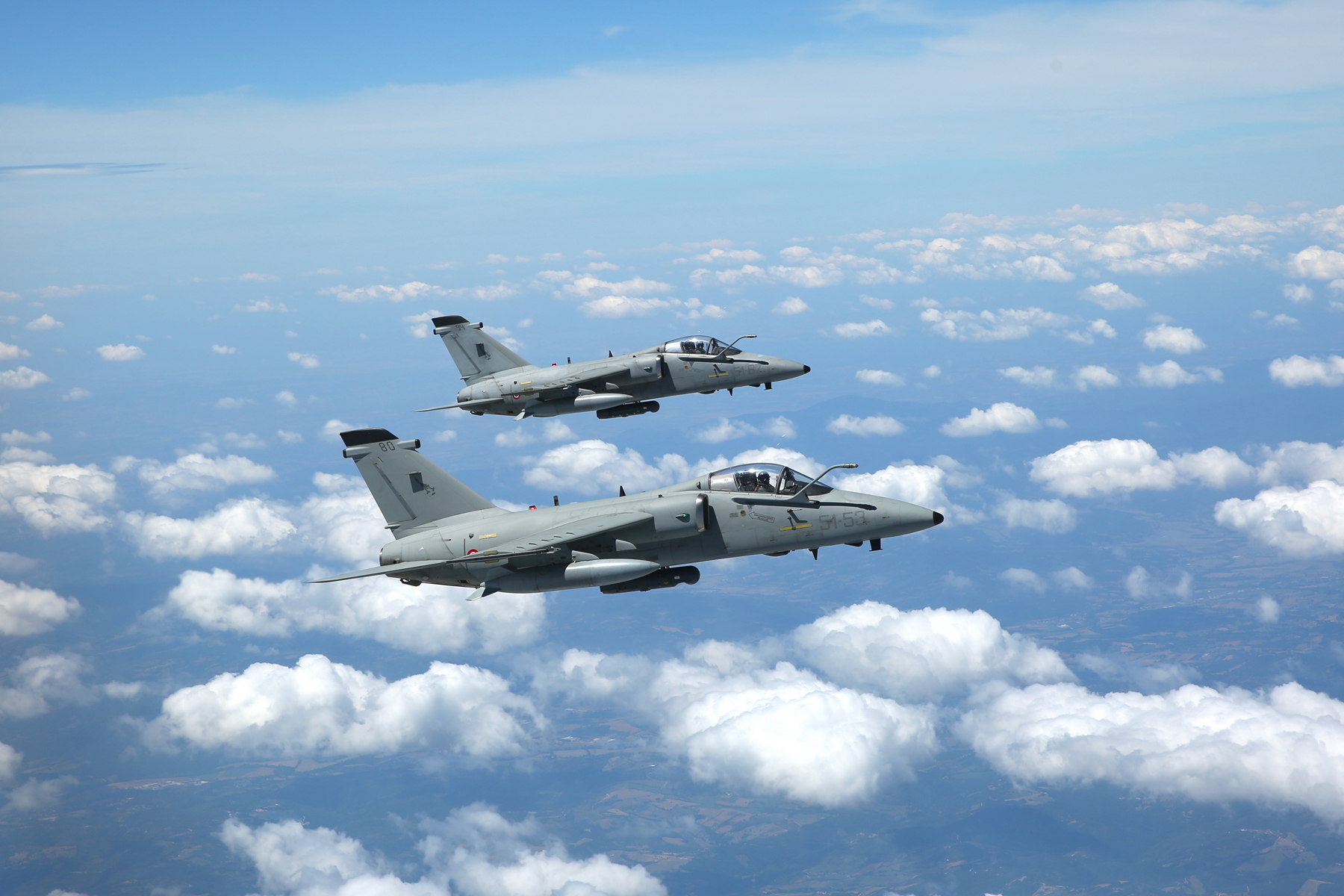
Once the three AMXs’ completed refuelling, we enter the bonus phase of this mission; the tanker marked 14-03 coordinates with the AROs to start the training with the boom; as the KC767 is currently the only aircraft in the ItAF inventory which can replenished with the boom it is therefore essential to maintain the proficiency of pilots and operators to safely perform these delicate phases of flight. Also this refueling mode give us the chance to witness the full use of the features that the console RARO II (evolution of the RARO I installed on the RNLAF KDC-10s since 1995) offers to the operator in manouvering the boom; given that, unlike the previous generation of tanker, the KC767 does not provide any more to the boom operator’s a direct view on the plane approaching for the boom insertion, it was necessary to provide the ARO a helmet projecting a three dimensional vision, thus allowing the operator to control the boom movements with extreme precision. To create a vision with a correct sense of depth, the use of two cameras was necessary, located in the HDU fairing to which is hinged the boom; the fusion of the images captured by the two cameras produces a stereoscopic vision of the space under the tail of the tanker. Furthermore, the boom is equipped with two stabilizing fins, and is controlled via FBW commands. In this first phase, the two AROs perform several contacts between the two tankers; while we can appreciate the sharpness of images taken by the SACS (Situational Awareness Camera System). Returning to the cockpit, we notice that for the duration of operations, the pilots have been able to keep under control the refueling operations using the PMD (Pilot Mission Display), an 8.4″ screen which make available to the pilots the same images at the disposal of the two AROs.
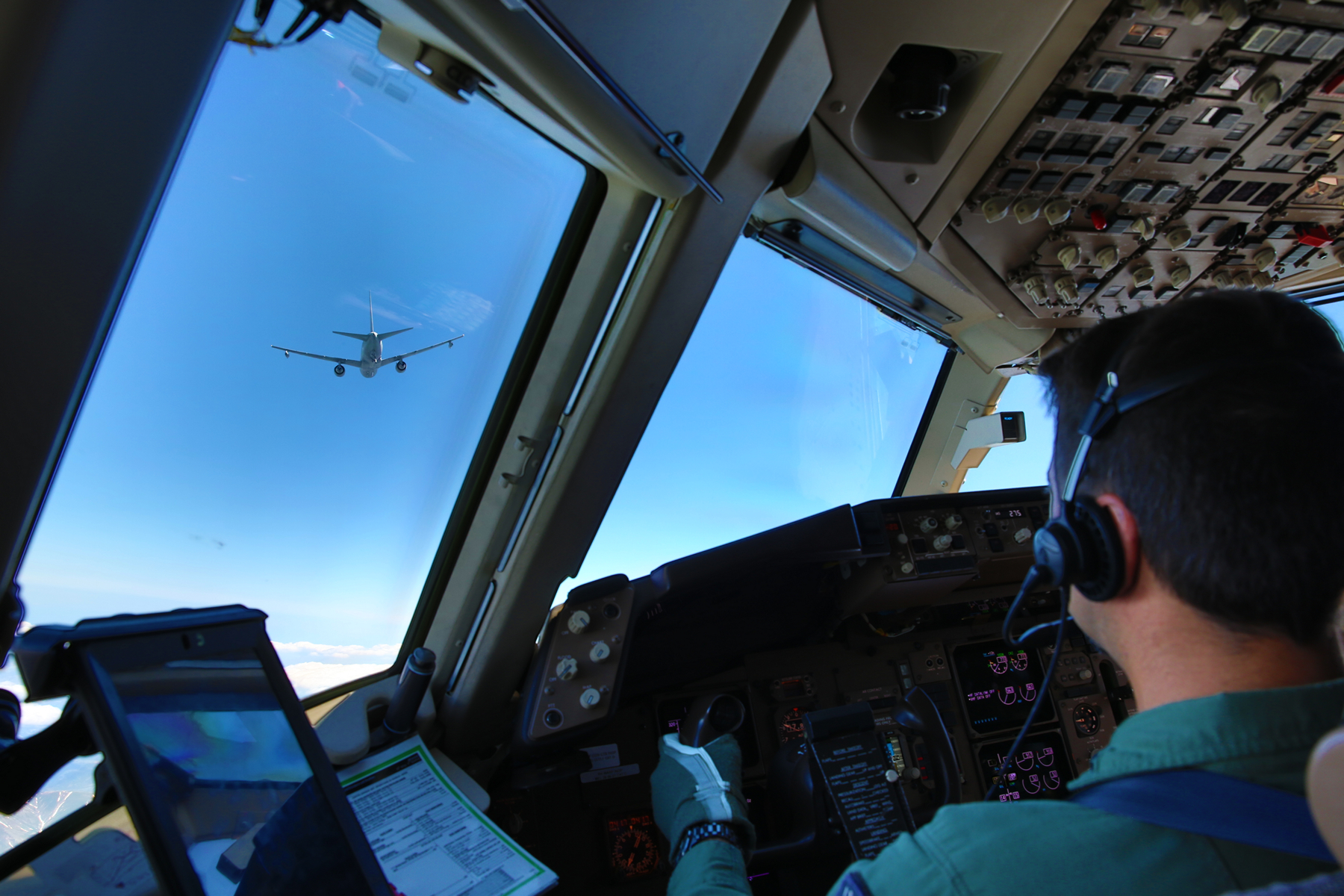
After about thirty minutes, it’s time to switch roles. The replenisher becomes receiver and vice versa. Tanker 14-03 joins us in the left wing and proceeds to go ahead and adjust altitude. The pilots of our aircraft lower their seats in order to have a better view of the tanker that will fly over us for the whole duration of the simulated refuelling. Now it’s our turn to receive directives from the other tanker’s ARO that guides pilots in precision approaches necessary to allow the insertion of the boom in our UARRSI (Universal Aerial Refuelling Receptacle Slipway Installation). Soon as the probe is inserted properly into the receptacle, an indicator on the cockpit eyelid changes from “ready” to “latched”, while the disconnection is highlighted by a “disc” in red. We can’t help but observe a subtle “braking” every time the boom enters the receptacle, evident proof of the mass of over 100 tons flying in perfect sync with us, less than twenty meters above our heads. The vantage point allows us to thoroughly observe the fairing that houses the HDU, the SACS cameras, the boom and the Pilot Director Underbody Lights system, i.e. a double set of metered lights that assists the ARO in directing the pilot of the receiver towards the insertion of the boom. During the last contact, the tanker transfers us some thousands liters of fuel (the boom transfer rate is 4,091 lt/ min, 1080 US gal/min), thus completing this successful mission of mutual training. Now it’s time to return to the base, flying over the beautiful Umbrian countryside, and then over northern Lazio.
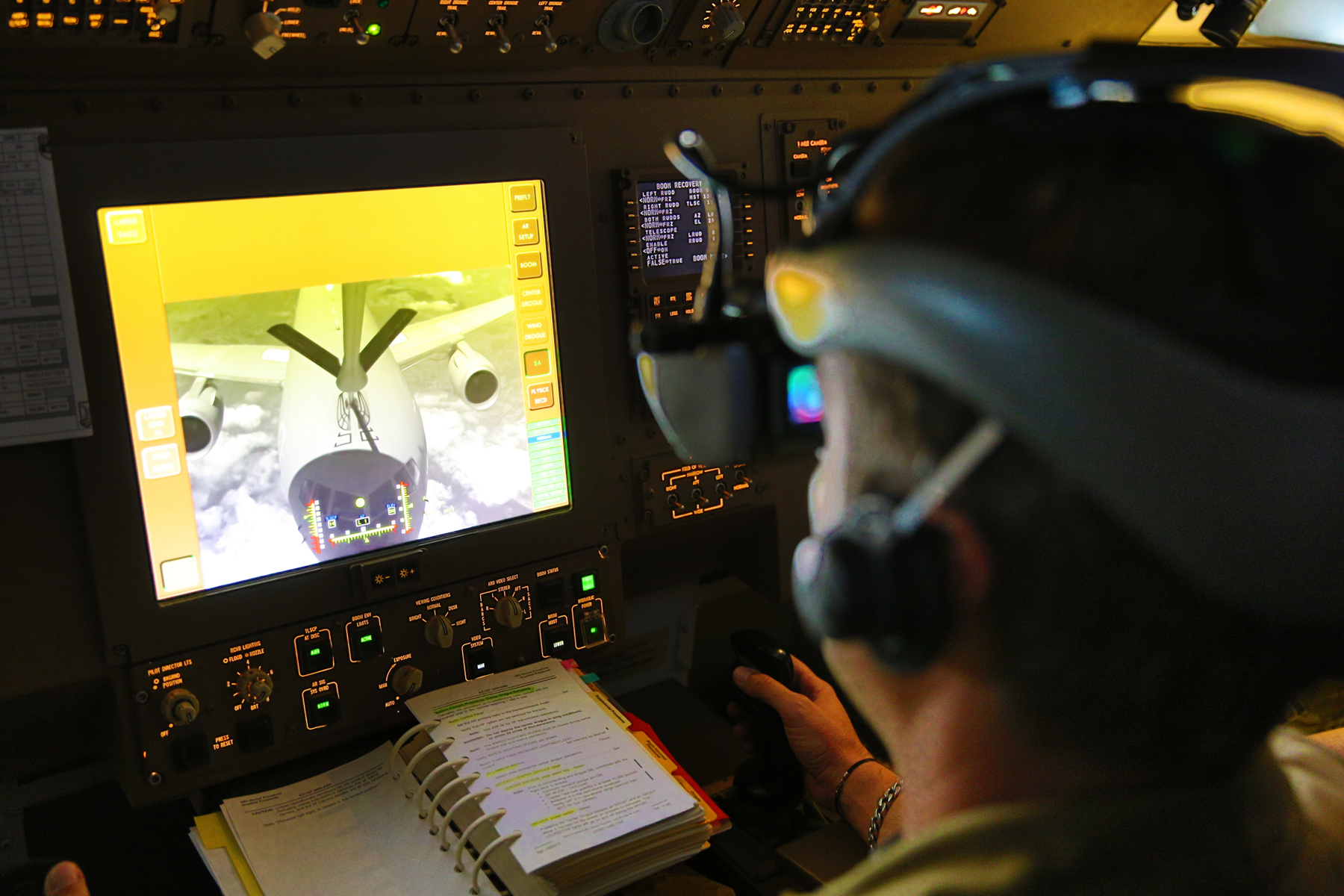
The landing on the runway of Pratica, parallel to the coast, presents us with a beautiful sight. Concluding this very interesting day, we leave the base with the further strengthened belief that the strategic goal set by ItAF more than twelve years ago, in December 2002, signing the contract with Boeing, can now be thought of as fully accomplished. The pondering over the lessons learned during the Gulf War pushed the Italian Air Force to acquire a small fleet of tankers; we remember with pride 23,000 flight hours that the four Boeing 707 T/T, predecessors of the current tankers, accumulated from May 1992 to April 2008 reaching the four corners of the globe (Bosnia, Albania, Zaire, Somalia, East Timor, Kosovo, Afghanistan , Iraq), a wealth of experience which allowed the 14th Stormo to cut corners in obtaining full operational status for the KC767s. Moreover, in less than four years, the new tankers have carried out a broad-spectrum of missions: from the transportation of men and materials in aid of earthquake victims in Nepal to the delicate mission of biocontainment performed on the occasion of bringing back an Italian doctor hit by Ebola in Sierra Leone. If these activities highlight the dual use capabilities of these aircraft, we stress the much more intense use in support of military missions, including the participation in Unified Protector (Libya), ISAF (Afghanistan), Leonte (Lebanon), Lorica (Cyprus), the Baltic Air Policing and the operations currently underway in Kuwait. Finally we must mention the certification to air refuel the F-35, performed for the first time last July in the Californian skies, an essential operation in order to prepare the flight, for the first time in the world, of an F-35 across the Atlantic Ocean, which took off from Cameri on February 3rd this year bound to NAS Patuxent River, escorted by two KC767, two EF-2000 and two C130J. During the 13-hour flight, with an unique stop in Lajes, delayed more than scheduled due to severe weather conditions along the route, the tanker has refueled the new F-35 Lightning II JSF six times, using only the boom.
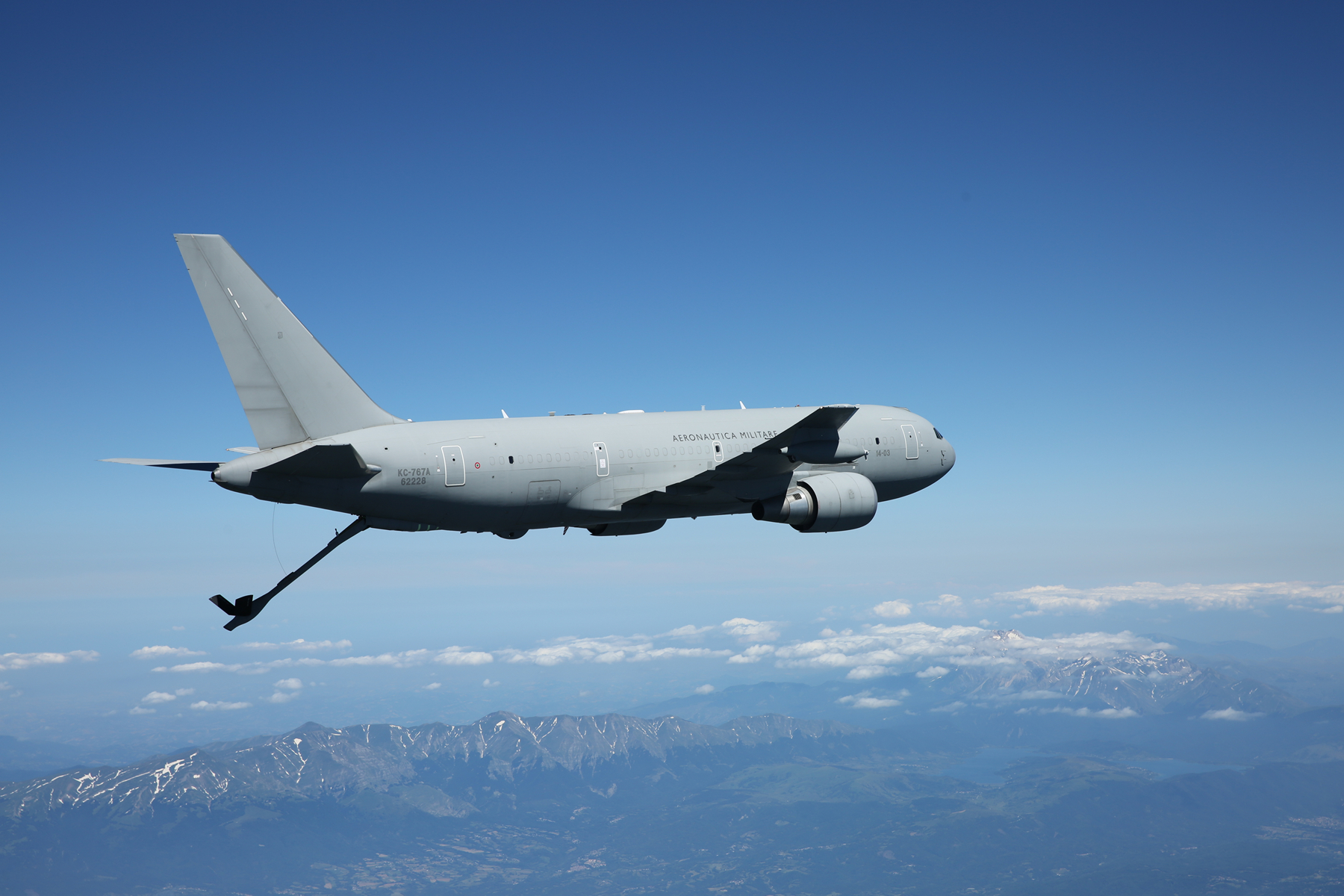
The dominant feeling is that, in the next few years, we will see these four assets frequently engaged in international missions, not limited to NATO missions, interacting with a fast growing range of aircraft (one example the operations with the Hungarian Gripens and the recent refuelling of a French E-3F during Exercise Trident Juncture 2015).
Gabriele was born in Turin, Italy, grew up in Sicily and now lives in Rome. His love for aviation goes back to the days when he was seven years old, he started to collect the ‘History of Aviation’ sold weekly at the nearby newsstand. With that, he realized that his goal was to become a military pilot. This dream met a harsh reality when, during the medical tests, a defect in his chromatic sense of sight was discovered.
His interest in photography arose a few years later, when he bought from a colleague his first single-lens reflex camera, a Pentax ME Super. Then everyday life took its toll; working as an IT analyst, studying for an MD in political science and starting a family left no time for enjoying his old interest for aviation. One day in 2008, he decided to revive the passion, starting again to take pictures of aircraft each time he has a chance. Now, using Canon gear, he is striving to become a photojournalist.
Gabriele can be reached at: [email protected]


